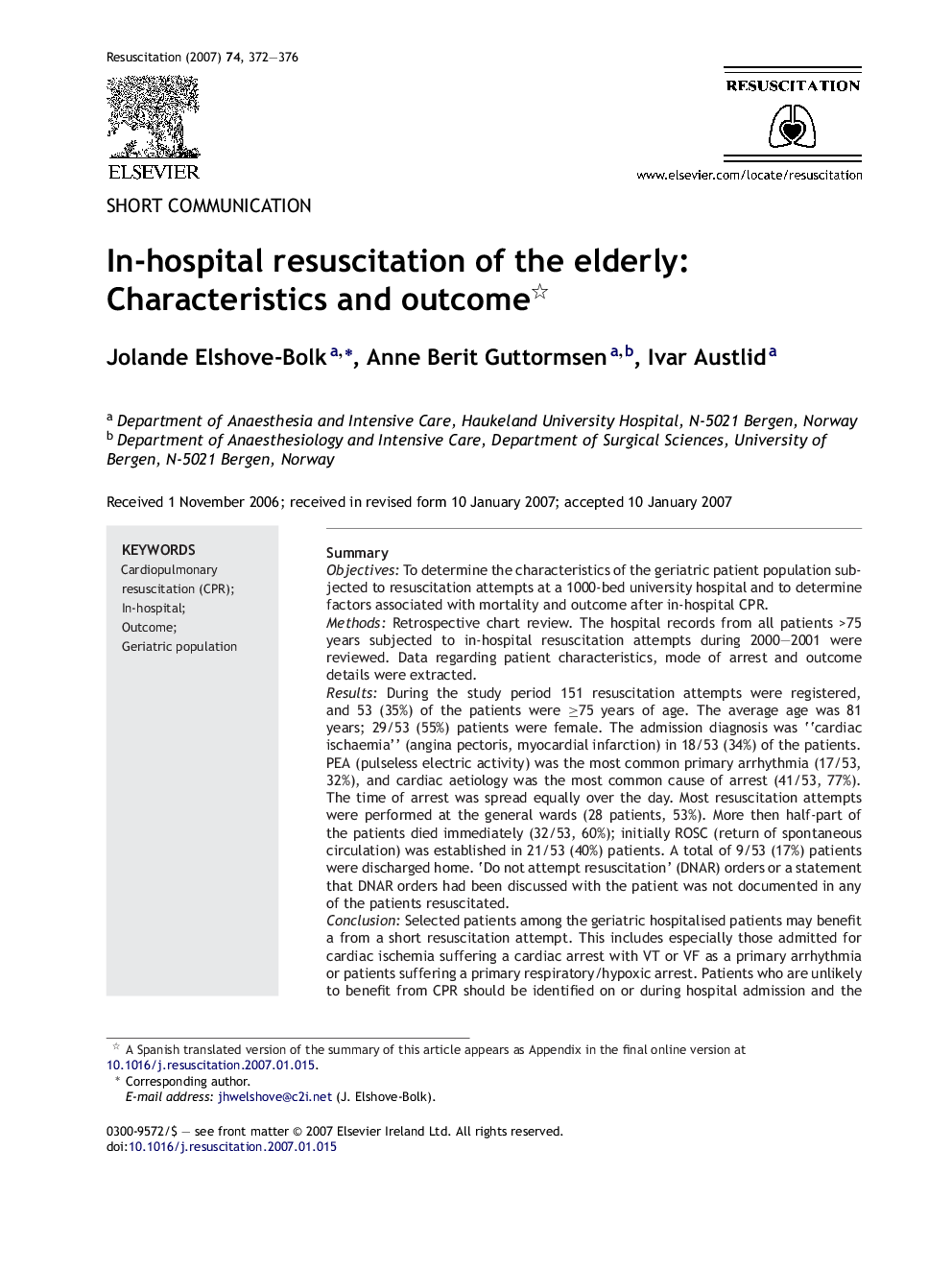| Article ID | Journal | Published Year | Pages | File Type |
|---|---|---|---|---|
| 3010712 | Resuscitation | 2007 | 5 Pages |
SummaryObjectivesTo determine the characteristics of the geriatric patient population subjected to resuscitation attempts at a 1000-bed university hospital and to determine factors associated with mortality and outcome after in-hospital CPR.MethodsRetrospective chart review. The hospital records from all patients >75 years subjected to in-hospital resuscitation attempts during 2000–2001 were reviewed. Data regarding patient characteristics, mode of arrest and outcome details were extracted.ResultsDuring the study period 151 resuscitation attempts were registered, and 53 (35%) of the patients were ≥75 years of age. The average age was 81 years; 29/53 (55%) patients were female. The admission diagnosis was “cardiac ischaemia” (angina pectoris, myocardial infarction) in 18/53 (34%) of the patients. PEA (pulseless electric activity) was the most common primary arrhythmia (17/53, 32%), and cardiac aetiology was the most common cause of arrest (41/53, 77%). The time of arrest was spread equally over the day. Most resuscitation attempts were performed at the general wards (28 patients, 53%). More then half-part of the patients died immediately (32/53, 60%); initially ROSC (return of spontaneous circulation) was established in 21/53 (40%) patients. A total of 9/53 (17%) patients were discharged home. ‘Do not attempt resuscitation’ (DNAR) orders or a statement that DNAR orders had been discussed with the patient was not documented in any of the patients resuscitated.ConclusionSelected patients among the geriatric hospitalised patients may benefit a from a short resuscitation attempt. This includes especially those admitted for cardiac ischemia suffering a cardiac arrest with VT or VF as a primary arrhythmia or patients suffering a primary respiratory/hypoxic arrest. Patients who are unlikely to benefit from CPR should be identified on or during hospital admission and the possibility of DNAR orders should be discussed to avoid inappropriate treatment and potential patient suffering. There is a need for implementing routines for discussing the existence of advance-directives or DNAR orders upon admission.
